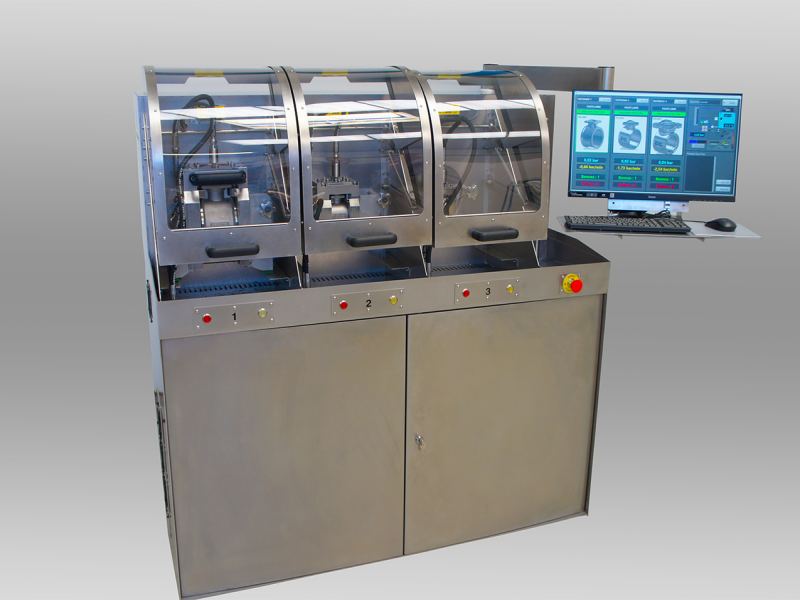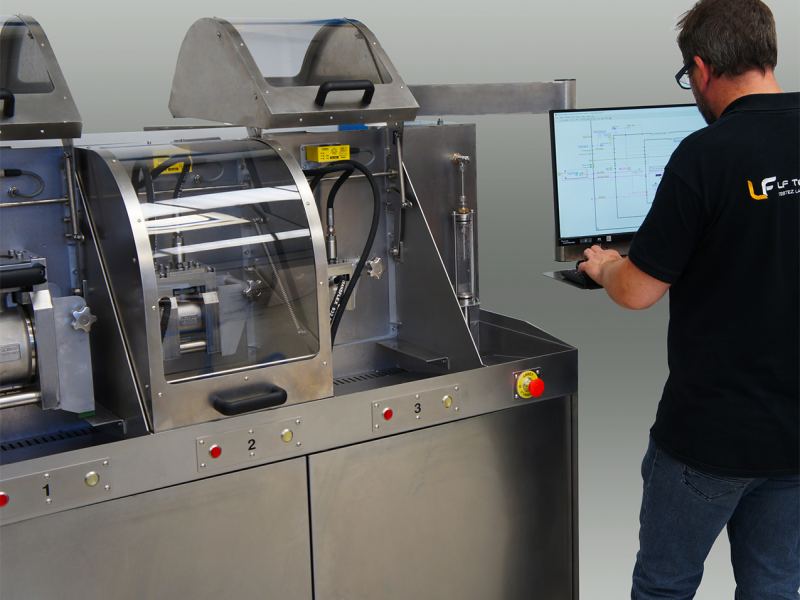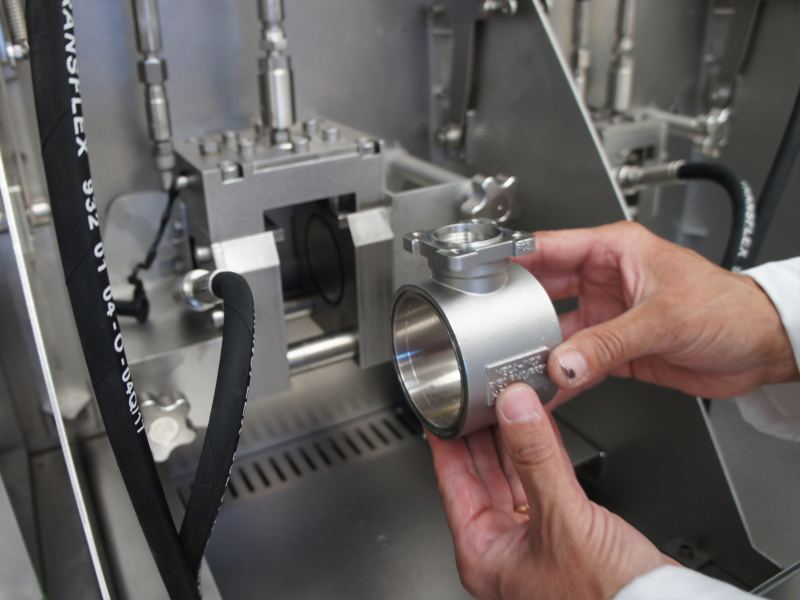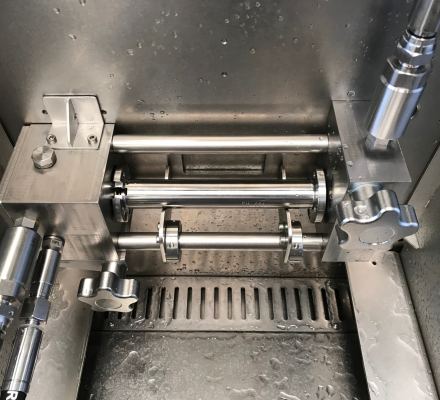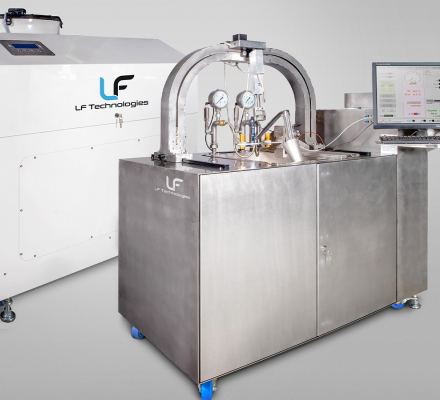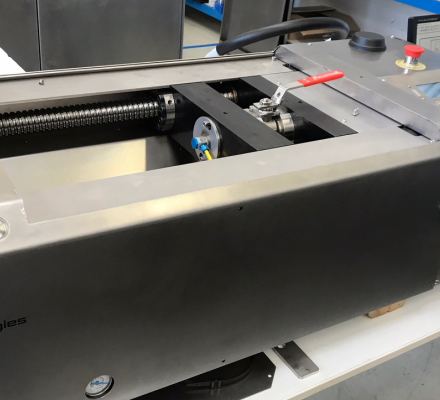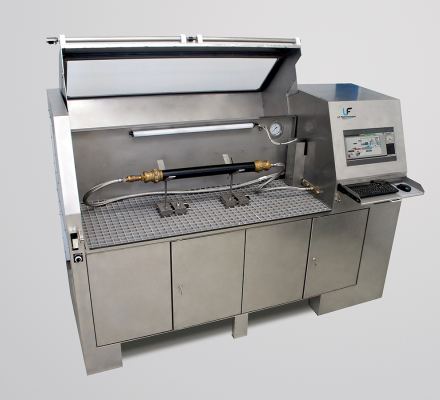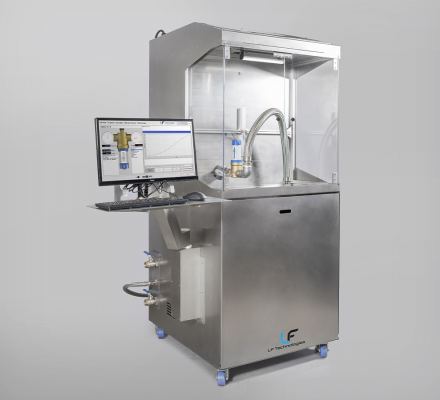Customer
Our client is the European market leader of high-performance ball valves. The company designs and sell numerous manual valves and pneumatic or electrical actuators.
Tested product
Valve bodies and valve extensions
A valve is a plumbing device that is operated to regulate a flow. There are several types of valves. The ball valve is either a shut-off valve to stop the flow of water or a flow control valve. The valve body is the part where the fluid flows.
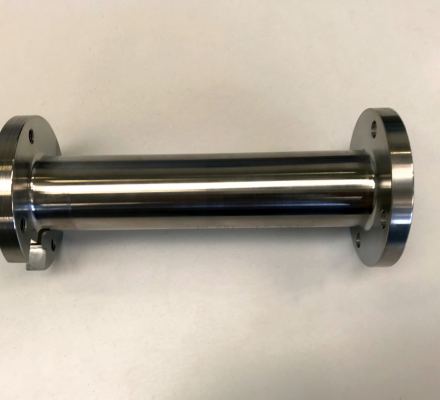

Objective
Conception and making of a hydraulic test bench for ball valves. Valves' shell are tested to high water pressure (up to 200 bar) to measure their mechanical resistance and leaking rate. The test bench can test several ranges of product with different diameters. To change valves quickly, a special and adaptable tooling was integrated.
Problematic issues
The bench has three test modules, allowing simultaneous testing of valves (extension of modules possible in the future). A variety of valve bodies with different DN (nominal diameter) are tested on the same test bench. The test circuit is designed to withstand high pressure (200 bar).
These tests have to be carried out at a high rate, which implies an automated connection of the tested products.
Solution and result
The proposed equipment, after study by our engineers, is a water pressure test bench, and marking, for valve bodies. The machine is equipped with three test modules allowing to carry out tests in masked time on several valves of different diameters.
Each tested valve is installed in a removable tooling. This tooling is equipped with hydraulic cylinders ensuring the automatic positioning of the hydraulic connections from the valve to the machine, without operator intervention.
Water filling and venting is provided by a centrifugal pump. The static pressure test is carried out by a servo-controlled plunger piston. The leakage test is done by measuring the pressure drop.
The marking of the products is ensured by a percussion marker, directly on the test station.
A sink positioned under the modules receives the water flows at the end of the sample test.
The tools are identified by an RFID with a unique number to check the conformity with the test program and thus prevent the admissible pressure from being exceeded.
The machine is controlled by a control software which allows:
- a visualization of all measurements
- editing, saving, reading and changing test parameter records
- saving the measurements made and the edition of automatic control reports.
The machine is equipped with polycarbonate covers to ensure the safety of the operators in case of water splashes. User safety is controlled by a dedicated safety PLC.


